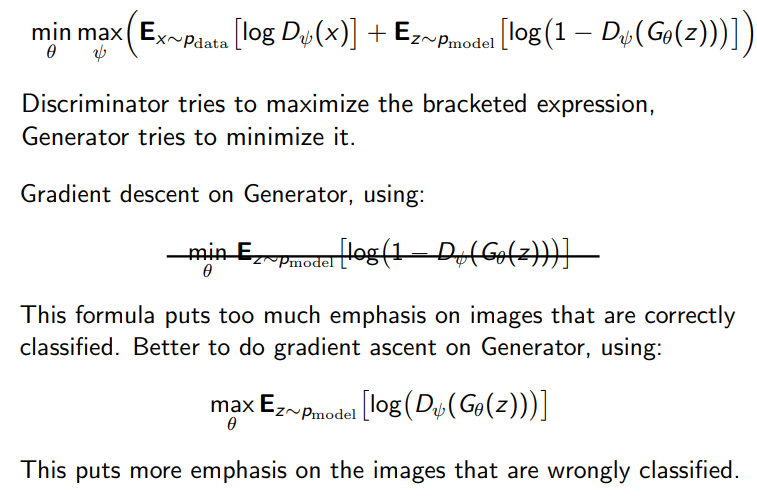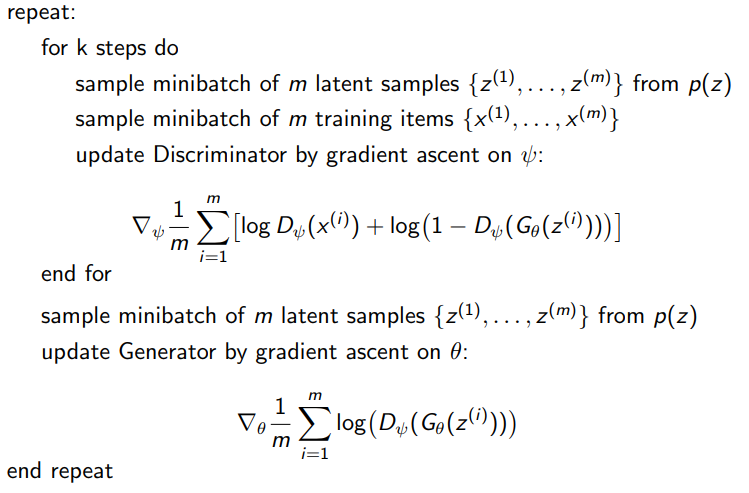13 Adversarial Training and GANs
Artist-Critic Co-Evolution
- Critic is rewarded for distinguishing real images vs generated artist images
- Artist is producing image, and is rewarded for fooling the critic into thinking it is real
Co-Evolution Paradigms
Blind Watchmaker
- Human user chooses best images, and after various generations gets better images
- Artist: Genetic program
- Critic: Human
- PicBreeder
- Artist: Convolutional Pattern Producing NN
- Critic: Human
Generative Adversarial Networks
- GANS: a generator (artist) and a discriminator (critic), both Deep CNNs
- Generator $z\rightarrow x$ generates imate x from latent variables z
- Discriminator $x\rightarrow D_\psi(x)\in(0,1)$ takes in image x and estimates probability that image is real
- Plays 2-player zero-sum game to compute:

GAN properties and learning
- One network aims to produce full range of images x, with different values for latent variables z
- Differentials backpropgated through Discriminator and into Generator
- Images produced are much more realistic

Architecture for NNs
- Normalise images between -1 and +1
- Don’t use pooling (you lose data) - instead:
- Discriminator: use strided convolutions
- Generator: use fractional-strided convolutions
- Batch normalisation for both NNs
- Remove fully connected hidden layers for deeper architectures
- Use tanh for output layer of Generator, ReLU for other layers
- LeakyReLU for all Discriminator layers
Stability
- GANs oscillate or get stuck
- Oscillation: trains for a long time but fails to improve
- Mode collapse: only produces a small subset of desired range of images, or collapses to single image with minor variations
- Prevent mode collapse via:
- Conditioning Augmentation
- Minibatch Features (Fitness Sharing)
- Unrolled GANs

